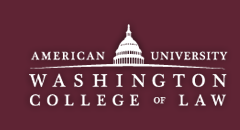Abstract
Over time, the Supreme Court has made clear its belief that marriage is one of the most significant and fundamental rights provided protection under the Constitution. In his opinion in Griswold v. Connecticut, Justice Douglas characterized marriage as a “coming together for better or for worse, hopefully enduring, and intimate to the [point] of being sacred[,]” describing it as “an association that promotes a way of life . . . a harmony in living . . . [and] a bilateral loyalty.” The Court in Griswold clearly found that marriage was deserving of protection not solely because it was the locus for procreation and the rearing of children, but rather that there was some protectable liberty interest inherent in the institution of marriage itself. As the Supreme Court stated in Zablocki v. Redhail, state regulation is limited to those “reasonable regulations that do not significantly interfere with decisions to enter into the marital relationship.” The state may adopt more intrusive or limiting restrictions on the right to marry only if they are “supported by sufficiently important state interests and [are] closely tailored to effectuate only those interests.” On May 30, 2015, a sweltering May day, I stood on the roof of the Bryant Park Grille in New York City officiating at the wedding of two wonderful young men, one of whom I have been close friends with for over fifteen years. As I looked out over Bryant Park prior to the start of the ceremony, I was overcome by joy at the momentous nature of the day and overwhelmed by the realization that we were in a historic moment that I never imagined I would live to see. Here I stood, a gay man in his fifties who had been toiling in the vineyard of the gay rights movement for over thirty years, as an activist and a teacher, bearing witness to a marriage between two loving men that was recognized as legal by the State of New York and by the United States. As one who lived through the horrid days of the early AIDS crisis and buried way too many friends along the way, I also could not help but think of all those too numerous to name who were not there to bear witness to such an amazing day. Throughout all these years, I have watched and represented loving gay and lesbian couples as they struggled to piece together some legal protections for their relationship and their children in the face of a hostile, if not indifferent, legal system. Some marvel at the rapidity with which the legal changes surrounding same sex marriage have occurred. But this marveling only ignores the blood, sweat, tears, and death over centuries that led us to this historic moment. While this article is certainly about the legal process that led to the Supreme Court’s decision in Obergefell, recognizing that state prohibitions on same sex marriages are unconstitutional, it is also deeply personal, in that all the stories that led us to this moment are somehow also my story. Part II of this article explores the development of Justice Kennedy’s jurisprudence related to the application of the doctrines of equal protection and due process through Romer, Lawrence, and Windsor, the trilogy of gay rights cases in which he wrote for the Supreme Court prior to Obergefell. This discussion culminates in an analysis of Justice Kennedy’s majority opinion in U.S. v. Windsor, which provided the basis for a vast expansion of the right of same sex couples to marry across the country, ultimately placing the issue squarely before the Supreme Court in Obergefell. Part III then examines the impact Justice Kennedy’s analysis in Windsor had on the United States Courts of Appeals addressing the constitutionality of state bans prohibiting the recognition of same sex marriage, leading to the decision in Obergefell. Part IV then provides an extensive examination of the Supreme Court’s decision in Obergefell. Part V, the conclusion, examines the aftermath of the Court’s decision in Obergefell, placing Obergefell in its proper context in the journey for greater inclusion of and protection for gay and lesbian persons and identifying some of the very complex issues that still lay ahead in the journey toward a structural and institutional formal equality regime.
